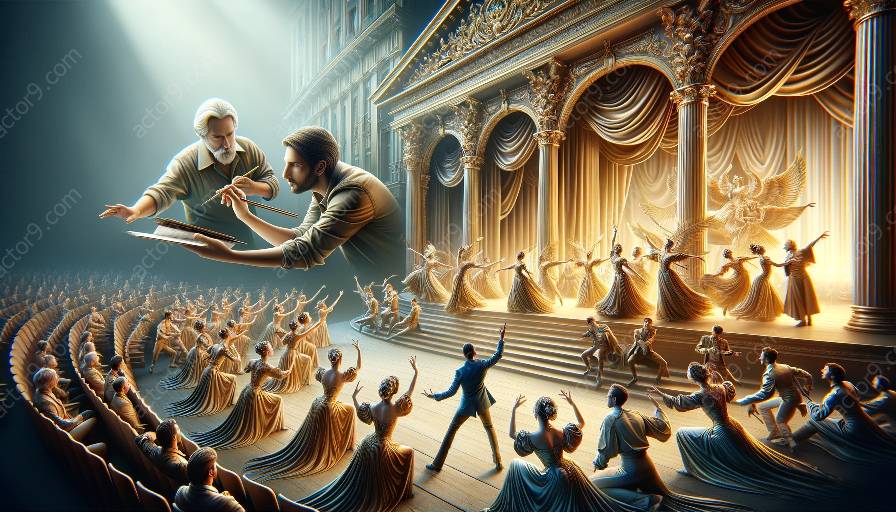Opera choreography plays a crucial role in bringing the stage to life, enhancing the storytelling, and complementing the music and libretto. In this comprehensive guide, we'll delve into the various approaches to opera choreography, its interplay with directing and the overall performance. From historical perspectives to modern innovations, we'll explore how choreography enriches the opera experience.
Historical Context of Opera Choreography
The history of opera choreography dates back to the early operatic productions, where dance was often incorporated to add spectacle and visual appeal to the performances. In baroque opera, dance interludes were prevalent, and choreographic elements were integrated with the music and singing to create a harmonious spectacle.
In the 19th century, the romantic and classical ballet styles influenced opera choreography, leading to more elaborate and expressive dance sequences. Choreographers such as Marius Petipa and Jean Coralli made significant contributions to the development of opera choreography during this period.
Traditional Approaches to Opera Choreography
Traditional opera choreography often aligns with the stylistic elements of the opera, reflecting the historical and cultural context of the narrative. It incorporates formal dance forms, such as ballet, folk dances, and courtly dance styles, depending on the specific opera's setting and storyline.
The choreographer works closely with the director to ensure that the movement sequences seamlessly integrate with the overall staging, enhancing the emotional and dramatic impact of the performance. Through intricate footwork, expressive gestures, and coordinated ensemble movements, traditional opera choreography brings a visual dimension to the storytelling.
Contemporary Innovations in Opera Choreography
As opera continues to evolve, contemporary approaches to choreography have expanded to encompass diverse movement vocabularies and interdisciplinary collaborations. Choreographers are increasingly exploring avant-garde and experimental techniques to push the boundaries of opera choreography, blurring the lines between dance, physical theatre, and multimedia art forms.
Integration of technology, multimedia projections, and non-conventional movement styles has redefined the possibilities of opera choreography, offering a fresh perspective to engage modern audiences. The choreographer's role extends beyond traditional dance composition to conceptualizing immersive and innovative physical storytelling, enriching the opera experience with dynamic visual narratives.
Interplay with Opera Directing
Opera directing and choreography are deeply interconnected, as both disciplines converge to create a cohesive and dynamic stage production. The director and choreographer collaborate to conceptualize the spatial dynamics, movement sequences, and visual aesthetics that complement the musical and dramatic elements of the opera.
Effective communication and synergy between the director's vision and the choreographer's creativity are essential for harmonizing the physicality of the performers with the narrative arc, music, and set design. This collaborative approach ensures a seamless integration of movement and staging, elevating the audience experience through compelling visual storytelling.
Enhancing Opera Performances through Choreography
Opera choreography enriches the overall performance by infusing energy, emotional depth, and visual spectacle into the production. Through synchronized ensemble movements, solo dance sequences, and physical interactions, choreography enhances the expressiveness of characters, amplifying their emotional journey and relationships.
Furthermore, opera choreography contributes to the immersive world-building, creating atmospheres and tableaus that transport the audience to different eras, cultures, and emotional landscapes. Whether through grand, majestic dances or intimate, nuanced gestures, choreography adds layers of meaning and resonance to the opera, fostering a holistic theatrical experience.
Conclusion
Opera choreography encompasses a rich tapestry of historical influences, stylistic diversity, and collaborative innovations, shaping the visual and kinetic essence of operatic performances. Its synergy with directing and performance underscores its pivotal role in shaping the audience's engagement and emotional connection with the narrative. As the art form continues to evolve, opera choreography remains a dynamic force that propels the operatic experience into new realms of creativity and storytelling.































